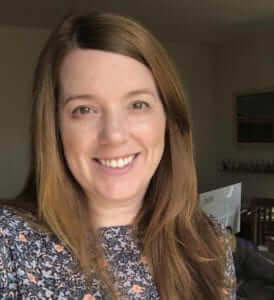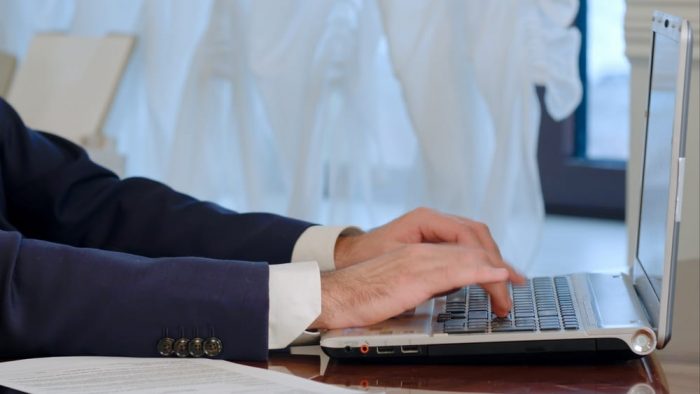The McKinsey Digital Interview – What It Looks Like & How to Pass
- Last Updated January, 2022
![]()


![]()


ex-McKinsey Employee
If you have a passion for solving business problems with data and cutting-edge technology, McKinsey Digital might be a good fit for you.
McKinsey Digital helps clients develop, launch, and run technology that is core to their business. If a McKinsey strategy study recommends the client implement new technology, McKinsey Digital would help execute that recommendation.
These business problems could look like:
In order to land a job with Digital McKinsey, you’ll need to ace the Digital McKinsey interviews. We’ve got the insights you’ll need to prepare.
In this article, we’ll discuss:
Let’s get started!
McKinsey Digital is a growing practice within McKinsey. That’s a positive for candidates like you!
The McKinsey Digital interview process will differ depending on whether you’re applying for:
If you’re applying for an associate or business analyst position right out of an MBA or undergraduate program, your interviews will look very similar to those for generalist consultants.
If you’re applying for a more technical role in McKinsey Digital, your interviews will include a Lightning Talk and a technical case interview, as well as the normal fit interviews.
We describe both paths below.
If you’re interested in applying for a McKinsey Digital Associate or Business Analyst role from campus, you should express interest in Digital McKinsey as well as your preferred office location in your application. (Note that McKinsey Digital is in only about half of McKinsey’s offices at present.) The process for joining Digital McKinsey will be exactly the same as for any Associate or Business Analyst role within the firm.
Prescreening: The McKinsey Problem Solving Game
Round 1: 2 back-to-back case and personal experience interviews
Round 2: 3 back-to-back case and personal experience interviews
See our article on McKinsey case and personal experience interviews for all the details on what to expect.
Consultants at McKinsey want to work with entrepreneurial leaders who are great problem-solvers, so the interview process is designed to evaluate candidates on those dimensions. While the overall process will be similar, Digital McKinsey interviews will have a greater emphasis on using technology and data to solve problems for their clients.
McKinsey makes it clear that if you’re applying as a business analyst or an associate, there aren’t specific technical requirements or certifications required to join McKinsey Digital.
No matter the role you are applying for, McKinsey is always looking for candidates who can demonstrate
In order to stand out as a candidate during interviews, you will also need to demonstrate a passion for solving business problems using data and technology.
So how can you demonstrate your passion for data and technology?
You gotta nerd out.
When discussing your personal experiences, you need to dig deep into your professional or personal background to share experiences where you solved problems by bringing together data that had not been used before or linking systems that had not been connected.
Personally, I love to talk about the thrill I get from organizing information from different data sources. I just naturally geek out when I talk about it.
In my professional consulting experience, I have several examples of projects where I needed to identify connective tissue between data sets, clean data (e.g., remove duplicates, etc.), and reorganize the data so that it could be analyzed and provide useful insights for my clients.
Most of the data and technology-intensive projects I’ve worked on in the past weren’t rocket science. But they were definitely unexplored territory for my clients. Often no one at my client had capacity or even just the will to complete these kinds of projects.
Often they were a pain in the… tail. But they can yield really valuable insights.
All of my data work had one thing in common – we needed to look at data in a new way to get insights that my clients never had before.
Actually, there were two things in common: I am relentless about getting insights. I. Never. Give. Up. On. Data.
That may seem obvious. But I’ve met a lot of people who give up when they hit data roadblocks.
You don’t need to have the same passion that I do, but find a way to talk about your passion in a way that makes it clear to your interviewers how excited you are, how relentless you are to forge new ground, particularly in the area of data and technology.
Roles in Digital McKinsey that require technical skills include data and product engineers, experience designers, engineers, product managers, data scientists, and core consultants. If you’re applying for these roles, the interview process includes:
The Quanthub prescreening test assesses your coding and/or statistics skills. You can find all the details in our article on the McKinsey QuantHub test

Round one interviews will focus on your personal experience. These interviews are commonly referred to as Personal Experience Interviews (PEI).
Typically, this round will include questions like “Why do you want to transition to consulting?” and “Why are you interested in joining McKinsey Digital?”
These may seem like softball questions. They are not!
At this point in the process, you need to stand out compared to other candidates, and the best way to do that is to have well-thought-out answers for why McKinsey Digital is the right next step in your career.
Share responses that provide insight into your passion and background with data and technology and why consulting is the right next step in your career. See our article on answering the “Why McKinsey?” question for more info on this.
You may also be asked a personal impact story, so you should be prepared to discuss a few different times when you drove impact in your personal or professional life. Since you’re preparing for a Digital McKinsey interview, you should prepare examples that include how you used data and technology to solve complex problems. But not every example has to involve data or technology since the focus of a personal impact story is your ability to influence people to your way of thinking.
The second round of interviews is more like a super-second-round, which can occur over multiple days. Typically, Round 2 of a McKinsey Digital Interview includes the following:
We’ve written a lot about PEI interviews, but we do want to make the point that you need to have multiple examples prepared about your personal experience. The consultants evaluating you will make note if you reuse the same examples in multiple interviews.
Keep reading to find out more about the McKinsey Digital interviews including the Lightning Talk and Technical case interviews.
If you’re applying for a technical position, McKinsey wants to know that you have the analytic rigor to meet the demands of the job. This is why they use the Quanthub test.
But for any position at McKinsey, the firm wants to know that you not only have strong tech skills, but that you also have strong business acumen. That you’ll focus on solving the client’s business problem first, and then on the technical requirements to get the job done.
McKinsey also wants to know that you communicate clearly to clients and consultants.
To assess these skills, McKinsey Digital uses the Lightning Talk and technical case interview.
Lightning talks are typically ten-minute PowerPoint presentations that you’ll give to McKinsey Digital consultants about a real data or technology-driven project that you worked on.
It can be hard to imagine summarizing an entire project in ten minutes for some strangers.
Imagine that you have a new VP in your division and you need to get them up to speed on the project and what it accomplished. That’s about the level of detail you need in your Lightning Talk presentation, though more of the analytical rigor in the work will come out in the following Q&A.
You’ve probably worked on several initiatives that could be a good fit. Choose a project that presented a significant challenge and where the impact was large and visible to the organization.
This is a moment to highlight your experience and capabilities, so you also want to choose a project where you:
If you find yourself talking about ‘We’ did this or that, you will often hear a McKinsey interviewer ask for clarity – “What did you personally do? Not the team.”
Set yourself up for success by choosing an example where you can demonstrate clear ownership, even if it’s a small part of a larger project.
It’s important to spend time on structuring your presentation. You don’t want the deck to be too long because you’ll never get through it all.
Here’s an example of an outline for a 6-7 page deck:
It would be great if you could include visuals of what you built to make your presentation more interactive. They’re not necessary, especially if your work is still confidential.
Be prepared for Q&A during your presentation or at the end.

In the second round, you’ll also be given a McKinsey technical case interview. This is very similar to a regular consulting case interview, but it will focus on a client problem that is data or technology-driven.
If you aren’t familiar with consulting case interviews, read out Ultimate Guide to Case Interview Prep to find out more.
Here’s an example for a client who wants to transform customer experience at live events (remember those?) using digital tools.
Concert-mania Inc. runs several major music festivals throughout the year. They recently transitioned to cashless events, so their customers are accustomed to paying for tickets, food, beverage, and merchandise with credit cards.
Concert-mania now wants to take its digital festival capabilities to the next level to optimize revenue, staffing, and operations during their festivals.
How would you help Concert-mania develop a strategy to use digital tools and data to improve customer experience, to increase operational efficiency, and to grow event revenues?
Start with how you would structure an answer to this question. It’s a good idea to use a structure that showcases the “digital” aspect of your thinking.
DIGITAL CONSIDERATIONS
NON-DIGITAL CONSIDERATIONS
These are just some thought starters for structure. From there, your interviewer will guide you through some specific questions and ways that you could structure and organize data or use new tools.
We’ve covered a lot about the McKinsey Digital interview. Here’s a recap of our top tips to pass the interview and get an offer!
It can be tempting to brainstorm code or other fun technical tactics. But your interviewer needs to know that you understand the problem you are trying to solve for the client.
Make sure to keep an eye on the main business problem of your client throughout the interviews, and ensure your recommendation will help solve said problem.
Case interviews often have a lot of moving parts. It can be easy to get lost in the midst of a lot of detail. Get comfortable with your structure and use it as your touchstone throughout the interview.
When you get to the technical part of the interview, this is really your time to shine. You’re bringing skills to the table that most general consultants won’t have. Bring in tech solutions you’ve seen work in other projects that could help solve the client problem. Have fun here and show your enthusiasm for this kind of work.
While most digital work is about technology and data, implementation requires a lot of coordination with:
McKinsey Digital interviews are not going to be impossible to solve. Often McKinsey has either worked on something similar or is in the process of working on something similar. So they know there are some good answers out there.
Be sure to wrap up your case interview with confident recommendations for your ‘client.’
In this article, we’ve covered:
If you have more questions about the Digital McKinsey interview, leave them in the comments below. One of My Consulting Offer’s case coaches will answer them.
Other people prepping for the Digital McKinsey interview found the following pages helpful:
Thanks for turning to My Consulting Offer for advice on prepping for the McKinsey digital interview. My Consulting Offer has helped almost 85% of the people we’ve worked with to get a job in management consulting. We want you to be successful in your consulting interviews too. For example, here is how Qixin was able to get her offer from McKinsey Digital Shanghai.